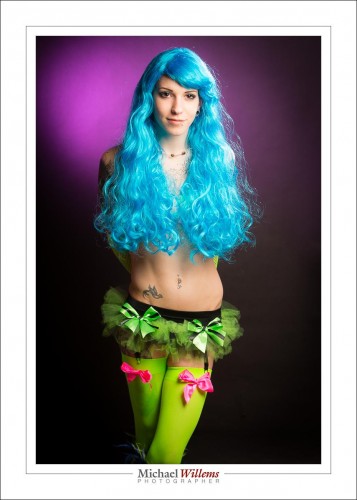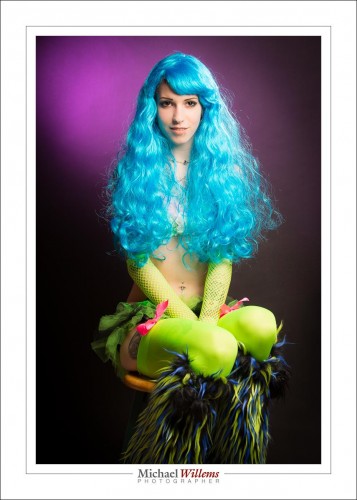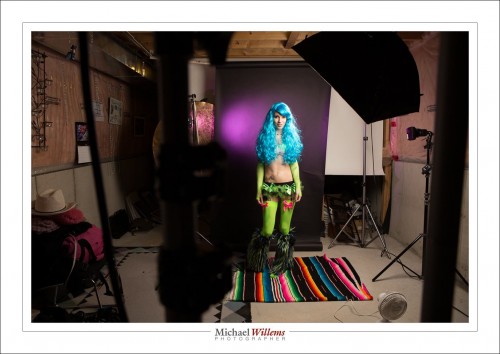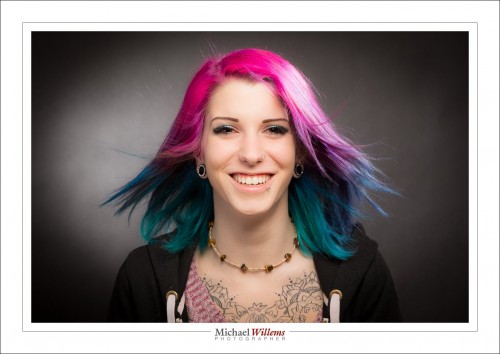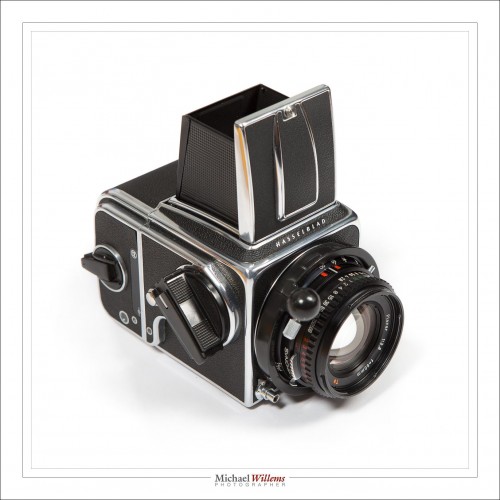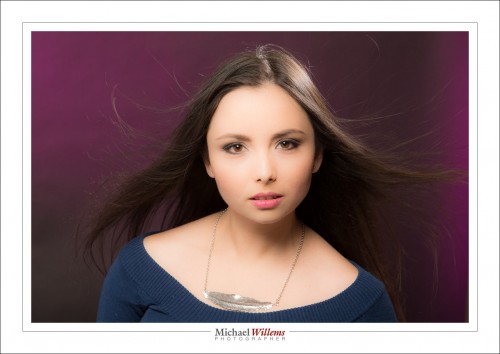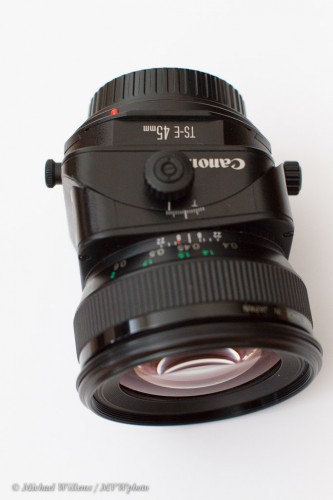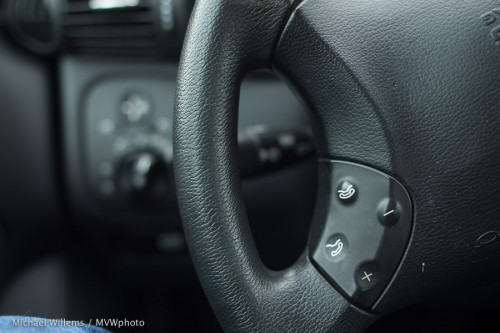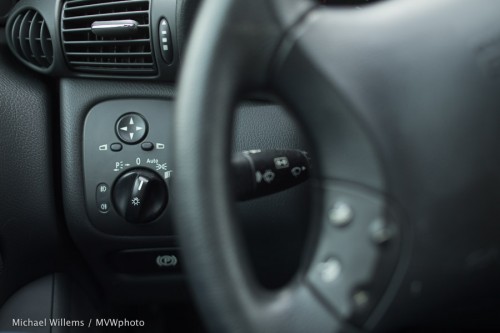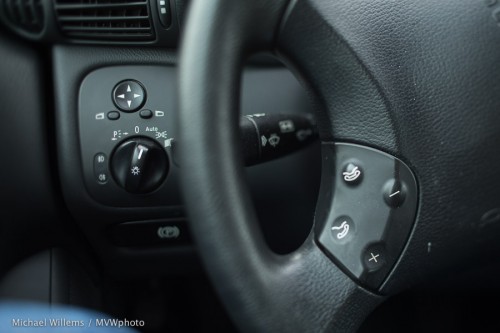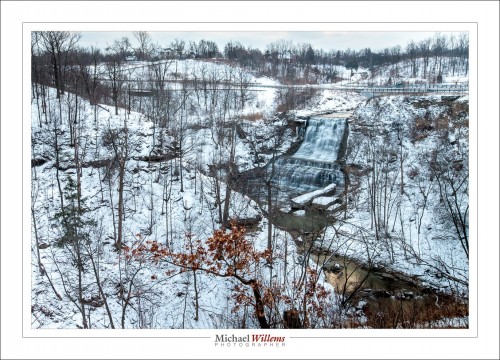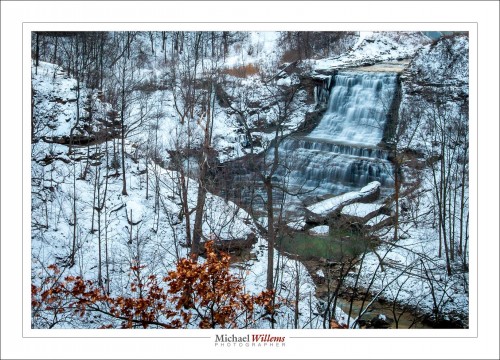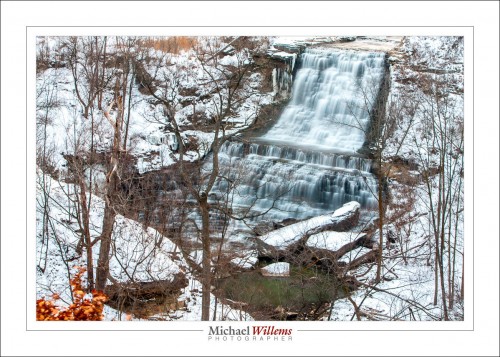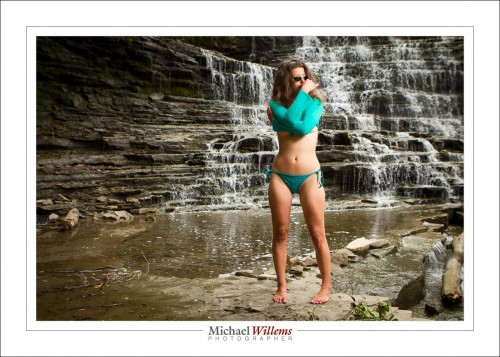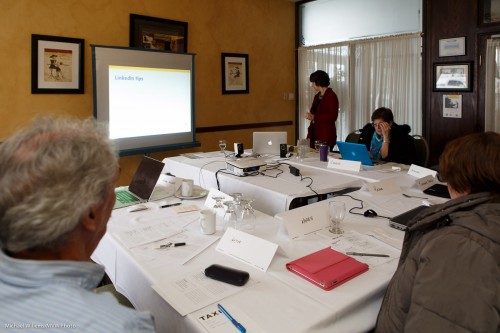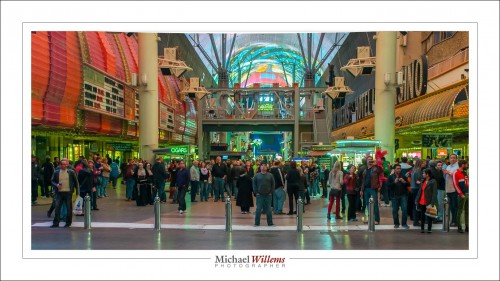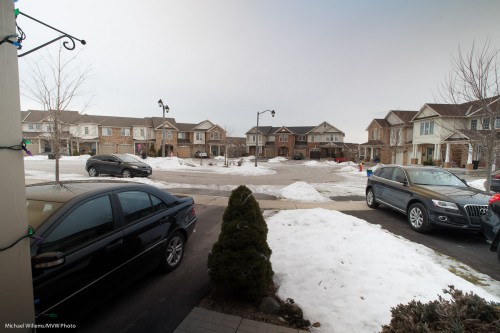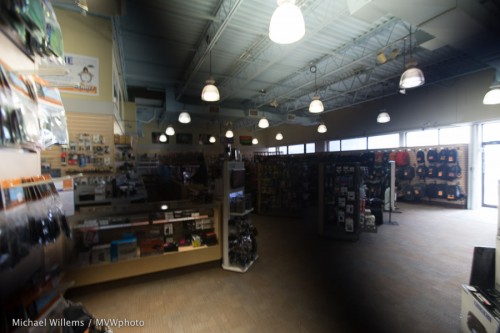Today’s post is once again a “a day in the life of” post. The photo of the day one I took today of model Khoral, who is of course totally gorgeous, but much more importantly, who is both intelligent and a very nice person. Those are rare qualities: more rare than good abs (or whatever physical attribute you wish to name).
And as you see, she has dress sense too.
But how did I shoot her?
I shot her like this, in the studio:
The details:
- The main light was a strobe with a softbox, mounted on a boom. It was fired by a Pocketwizard.
- The hair light (needed for Shampooey Goodness™) was a strobe with a snoot. It was fired by using its cell (i.e. when the main flash fires, it senses the flash, and fires too).
- No fill light was used, but in some pictures I used a white reflector as the fill light.
- The background was a black paper roll. Black is good: it eats up stray light and given enough flash power, I can make it any colour I want, since it does not pick up white light from the other flashes.
- The background light was a speedlite (a Canon 580EX), also fired by a Pocketwizard. It was fitted with a purple Honlphoto gel stuck on top of a 1/4″ Honlphoto grid (the gel colours the light; the grid restricts it to a small area to produce that nice oval with dropoff).
- The camera was a 1Dx with a 70-200m lens. The longer the lens, the less distorted and more flattering the pictures.
- Why the purple gel? This was a key decision. Her clothes were extremely colourful, and I had to choose a colour that matched. Purple was a good choice.
- The camera was, of course, set to studio settings: 100 ISO, f/8, 1/125th second. You can finess this. For instance, if you have insufficient light you can either turn up the light, or turn up the ISO, or turn down the f-number. (Not the shutter speed. Why? Read the flash manual).
And one last one, one that shows the model’s genuine smile – an asset much greater than other assets people can have. No, models do not always need to look grumpy.
(You will see that once again, I used a fan for some of the shots, since she has longish hair).
One more word. Was this all done in camera? Yes, with a few exceptions. Slight exposure and white balance changes in post production (for which I use Adobe Lightroom) are OK: as long as they are slight, and could not have been done in camera. Skin blemish fixes are fine – but this model has almost perfect skin, so little needed to be done. Removing the odd stray hair? Fine. A little vignetting in post is fine too. Cropping and rotating, ditto. And I made the pink cushion into a red cushion (using the Lightroom masking tool and its colour setting). But these photos were mainly done in camera. You need to learn to do it in camera if you wish to call yourself a photographer. But even when you are, do realize that every ophoto needs a little TLC in post until you can call it “done”.

